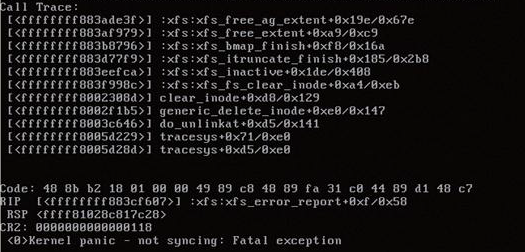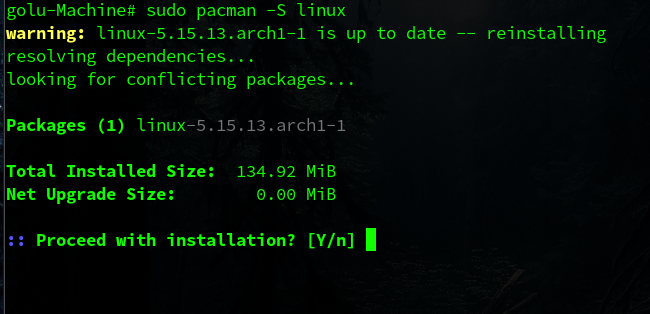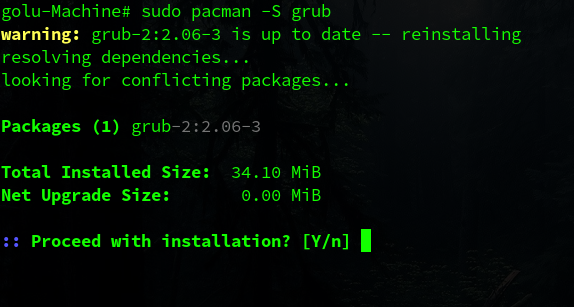Kernel panic not syncing is an operating system error that is displayed during the boot time of the operating system. It shows that something has gone wrong with the boot process, and an automatic self-recovery is impossible. A kernel is an essential part of the operating system that is responsible for the low-level hardware management of the system. If something goes wrong with the kernel itself, the operating system becomes non-functional. A kernel panic is primarily specific to Unix-based operating systems like macOS or Linux. The reasons for a kernel panic to happen can be totally arbitrary such as hardware failure, kernel file corruption. This article shows you how to deal with a kernel panic, not syncing.

Contents
Kernel panic not syncing
As mentioned earlier, “kernel panic not syncing” can have many potential reasons. The most common reason is misbehaving hardware. The kernel is the first layer of the operating system that directly controls the hardware. If any hardware misbehaves or something unexpected occurs, then a kernel panic is caused. Sometimes kernel panic can also be caused by faulty software bugs or resource-hungry applications. The solutions to the kernel panic problems require you to reboot your system into the recovery mode or boot another live OS through a disk or a USB to fix the kernel-related problems.
Resolve Kernel Panic not syncing Linux
Kernel Panic not syncing is a boot-time error. There is not much you can do with the operating system if it occurs. Still, there are options through the boot menu that could help you gain access to your operating system data. There are other command-line tweaks that you could perform to make your operating system work again. Here we provide you the two of the best possible solution to this issue. Follow the given steps to resolve the Kernel Panic not syncing error through the advance options in the boot menu.
- Reboot your system.
- In the grub bootloader menu, instead of booting with the default option.
- Go to the “Advance option for …<your os name>” and hit enter.
- Now boot your system in the recovery mode. if you were able to boot succesfully.
- Open the terminal and enter the following command.
nano /etc/selinux/config- In nano head to the end of the file and add “SELINUX=enforcing“.
- Press Ctrl + O to write the file and Ctrl + X to exit nano.
- Reboot the system.

Kernel panic not syncing fatal exception
The fatal exception kernel panic happens when an unexpected exception is encountered during the boot-up process of the operating system. The most common cause of the exception is the missing or corruption of the initramfs. initramfs is short for an initial RAM file system. It is a temporary file system that is initially loaded on the RAM, which then points to the Linux kernel to boot it up. If the initramfs is not found or corrupted, a kernel panic occurs. To resolve this issue, reboot your system, and boot your operating system in secure/recovery mode, then in the terminal, use the following commands to restore initramfs.
cp -p /boot/initramfs-$(uname -r).img /boot/initramfs-$(uname -r).img.bak.This command creates the backup of the current initramfs for later troubleshooting purposes.
dracut -fThis command creates new initramfs for the current kernel version automatically. Now reboot your system.
Kernel panic not syncing vfs
“Kernel Panic – not syncing: VFS: Unable to mount root fs on unknown-block(0,0)”. Again this is the error message that is displayed when is kernel is unable to mount the root file system. This problem is also linked with the initramfs, either missing, outdated, or corrupted. Reboot your system insecure/recovery mode and then run the following commands in the terminal to resolve this issue.
sudo update-initramfs -u -k <version>
// replace the version with your current kernel version.
sudo update-grub
// update the grub bootloaderKernel panic not syncing no init found
Kernel panic not syncing: no init found a kernel error that is caused when the kernel is unable to find the root file system or is unable to mount the root drive, or initramfs is not found in the file system of the drive. This error usually happens during the installation process as users do not format the live USB correctly or use a corrupt iso image to install the system.
Users need to make sure that before making the USB bootable with tools like Rufus, they format the drive completely and then use the Rufus tool to make the drive bootable. Check the hash sums of the downloaded files and match them with their official website to ensure that the iso image you downloaded is authentic and complete. Also, make sure that the file system of the bootable drive is FAT32.
How to resolve Kernel Panic not syncing VM
If you are trying to virtualize a Linux distro on Windows using VMware or Virtualbox and are receiving the kernel panic message, try altering the following BIOS settings that might be causing some issues with the virtualization. In some of the motherboards, virtualization technology is disabled in the BIOS, which can cause issues like this in the virtualization process on Windows. Follow the given step to enable the Virtualization technique in your BIOS.
- Reboot your system.
- During the boot-up press F12 (Dell, check manufacturer’s website for your reserverd key).
- In the BIOS menu, use arrow keys to navigate to the Advanced option.
- Go to virtualizaton Technology and hit enter.
- Make sure it is enabled.
- Press F10 to reboot the system.
- Now, you can run the virtual machines.
How to Avoid Kernel Panic
Prevention is always better than cure. There are no guaranteed ways to avoid a Kernel panic, but some measures and cautions can be easily employed to reduce the chances of kernel failure. The following are the few points that the users might want to keep in mind to prevent issues like kernel panic not syncing. The points can be employed on almost every Unix-based distro to avoid the problems like Kernel Panic not syncing.
- Keep your Kernel up to date. keeping your kernel updated with the latest stale kernel might significantly reduce the chances of enountering a kernel panic. Use the sudo apt install Linux on debian based linux and sudo pacman -S Linux on arch based Linux to update your kernel to the latest release.

- Remove the outdated and unused packages. If there is no need for a particular package or the package is broken and often casuses system faults then remove that package using your default package manager.
- Keep your bootloader up to date. In linux GRUB bootloader is mainly used. keep your bootloader up to date to prevent any boot-tiime issues such as kernel panic not syncing. Use the sudo apt install grub on debian based and sudo pacman -S grub on Arch-based Linux to update the Grub bootloader.
- Do not plug any broken or misbehaving hardware on your system it could lead to kernel failure.

FAQs on Kernel Panic not Syncing
Is kernel panic a bug or a feature of Unix kernel?
Technically it is a measure taken to avoid further harm to your system, such as data loss, etc. It can happen due to bugs and other reasons. But, it is a security measure.
What is nano?
Nano is a free and open-source text editor program pre-installed with almost every Linux distribution.
I did not find the Virtualization option in my BIOS?
Then chances are it is enabled by default. Try finding it through other names, such as Intel Virtualization Technology, etc.
What does FAT32 mean?
It is a type of file system. It stands for File Allocation Table 32bit.
Conclusion
Kernel panics are not really something that you should panic about. They are usually not common and happen only once in a while. Still, if you are facing kernel panics regularly, then you should follow the measures suggested in this article to avoid them. But, if for some reason you continue to face the kernel panics, back up your essential data and consider a fresh install of the operating system.









